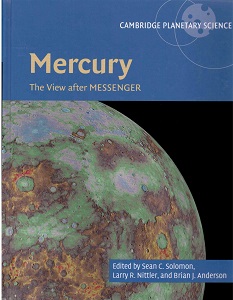MESSENGER (a somewhat contrived acronym for MErcury Surface, Space ENvironment, GEochemistry, and Ranging) was the first spacecraft to orbit the planet Mercury, between 2011 and 2015. As with any ‘first’ mission, the results from Messenger’s multiple scientific payload instruments gathered a wealth of data that will be studied for decades and this large format book comprises 20 scientific contributions from those in the field.
It begins with an overview of the science goals and the instrumentation on the spacecraft designed to inform the main areas of interest. Subsequent chapters cover those areas in detail, including Mercury’s chemical composition, its crust and internal structure, its magnetic field and the effects of impact cratering, to name but a few.
Each contribution has academic section numbering and a reference section and is illustrated with graphs, charts and diagrams, many in full colour. This last aspect makes the book more accessible to those with at least some degree of scientific literacy, but it will appeal particularly to students and researchers. Importantly for such a volume, it also has a useful index. Considering the level and sheer amount of material here, the price is very reasonable.











